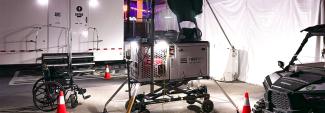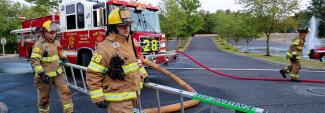Every summer, thousands of people travel to western Indiana for the Terre Haute airshow—a two-day event that features the Navy’s famous Blue Angels and other aircraft. While pilots spend months preparing to perform daring tricks in the air, public safety and state and local officials spend months preparing for the event on the ground. With several local, state, and federal first responders supporting the event, organizers for the 2018 event were looking for ways to enhance public safety communications. They decided to deploy FirstNet to provide a robust interoperable broadband connection for all involved.
“We were able to bring in FirstNet to establish the broadband and the Wi-Fi that blanketed the airport to support all the public safety entities that were responding,” recalled Brad Thatcher, Director of Response, Indiana Department of Homeland Security. “Having that available early on and knowing that capability existed in the planning process was really instrumental in the success of handling that event.”
Despite months of careful planning, event organizers could not predict the torrential rains that would fall days before the event or how the weather would impact the response and communications that followed. With grass parking lots flooded, organizers had to turn thousands of visitors away, many of whom turned to their devices to express their frustration.
Tyler Clements, Field Coordinator for the State of Indiana, explained that this created problems with network connectivity to local cellular towers. “When you’re talking an event with 40,000 people and you have potentially 15 to 20,000 people that are turned away, they’re going to open up and actually start using social media platforms,” said Tyler. “So, at that point in time, we had a lot of network congestion, and we were able to deploy FirstNet without any incident.”
With parking lots flooded, many visitors parked miles away and traveled to the event by foot. But as temperatures reached triple digits, several visitors suffered from heat exhaustion. First responders were able to depend on FirstNet’s “always-on” connection as they managed the influx of medical emergencies that ensued from those conditions. “Everything that you need is embedded within FirstNet to give responders the tools that they need to communicate, ultimately keeping them safe,” said Clements.
More from FirstNet in the video below:




















